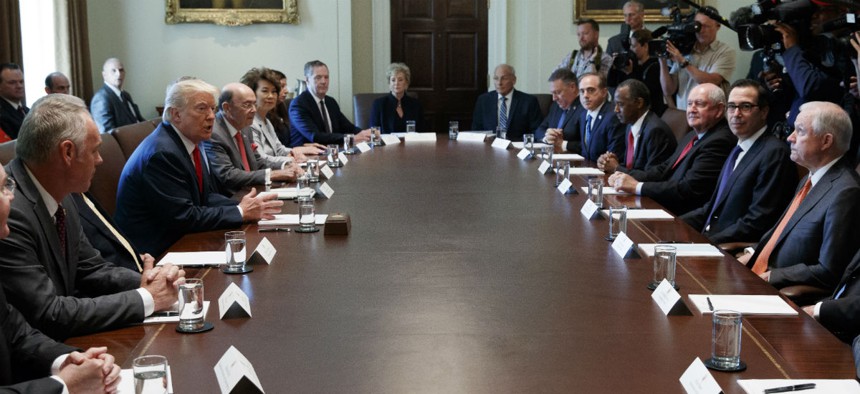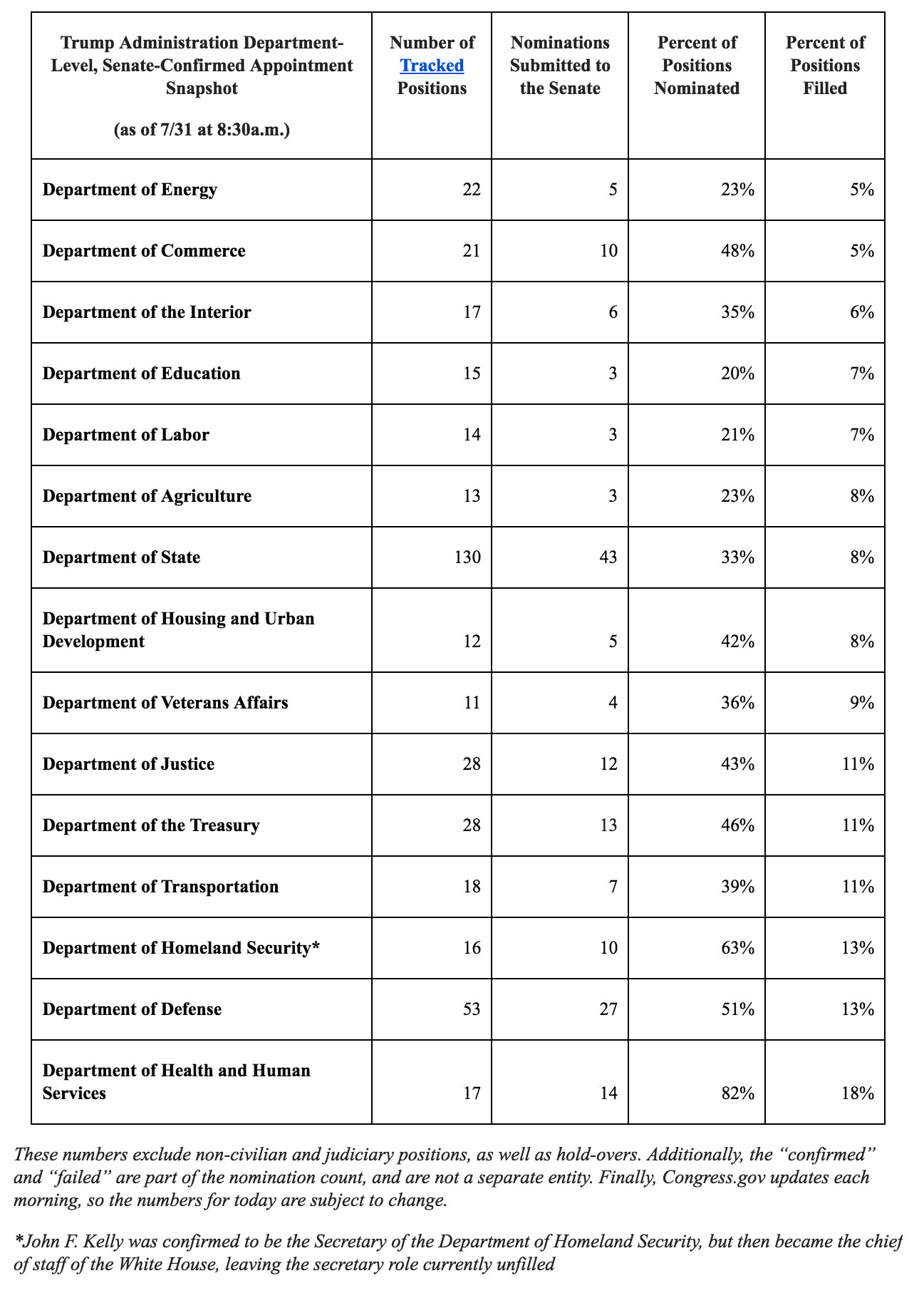
President Trump meets with his Cabinet at the White House Monday. Evan Vucci/AP
Latest Tally on Agency Vacancies Not Flattering to Trump White House
Two trackers show the president's appointments are pacing well behind those of recent administrations.
The Trump administration has shown progress in accelerating the pace of nominations for key agency vacancies but still lags far behind the pace of recent presidential administrations, according to two nonprofits tracking Trump appointments.
As President Trump approaches his 200th day in office (Aug. 7), he has nominated 255 people for the 1,100-plus positions requiring Senate confirmation, according to a tracker kept by the Partnership for Public Service and The Washington Post.
“While the pace of nominations for political appointees has picked up in recent weeks, critical leadership positions remain vacant at almost every agency and department,” said Max Stier, president and CEO of the Partnership. “The president must prioritize getting his full team in place. Doing so will strengthen his ability to run the government, achieve his priorities and deal effectively with the inevitable crises that will take place in our complicated and dangerous world.”
The Partnership’s latest summary commended the administration for pursuing a government reorganization, laying out a management framework and promising private-sector technology advances to federal agencies. “But the president has struggled to build cohesive leadership teams across government or work closely with the career workforce to accomplish his goal of improving agency effectiveness,” the nonprofit stated in a Monday release.
The Senate has confirmed only 51 of Trump’s nominees, setting an average of 46 days for the current administration’s confirmations. This is well behind “historic norms,” the Partnership said. The average confirmation time during President Obama’s tenure was 41 days and during George W. Bush’s presidency it was 35 days. Bill Clinton’s nominees averaged 30 days until confirmation, and George H. W. Bush’s, 32 days.
The Trump White House has consistently blamed Democrats in the Senate for slow-walking confirmation votes, and Stier urged the Senate to speed up its proceedings.
Key unfilled jobs, the Partnership noted, include the deputy director of management at the Office of Management and Budget; the director of the Bureau of Alcohol, Tobacco, Firearms and Explosives; the assistant secretary of State for East Asian and Pacific affairs; and the assistant Homeland Security secretary for Immigration and Customs Enforcement.
The departments with proportionately the most nominations include Health and Human Services and Homeland Security; those with the least nominations include the Energy and Commerce departments.

Though the Homeland Security Department is doing relatively well on nominations, only 12 percent of key national security positions governmentwide have been filled, the Partnership calculated. The academic-run White House Transition Project, which uses a different methodology to identify key positions, had a slightly higher percentage for national security appointments.
The transition project found in tracking 970 appointed positions that as of July 10, the Trump team had established the slowest pace in 40 years, trailing that of predecessors by eight weeks. The project found that in the national security area, Obama by the same time had filled 42 of 71 key slots, compared with only 18 for Trump. In management, Obama had filled 48 key slots out of 101, compared with only 19 for Trump. And in economic policy, Obama had filled 21 of 41 key slots, versus 14 for Trump.
NEXT STORY: Play of the Day: Trump's New Children's Album







